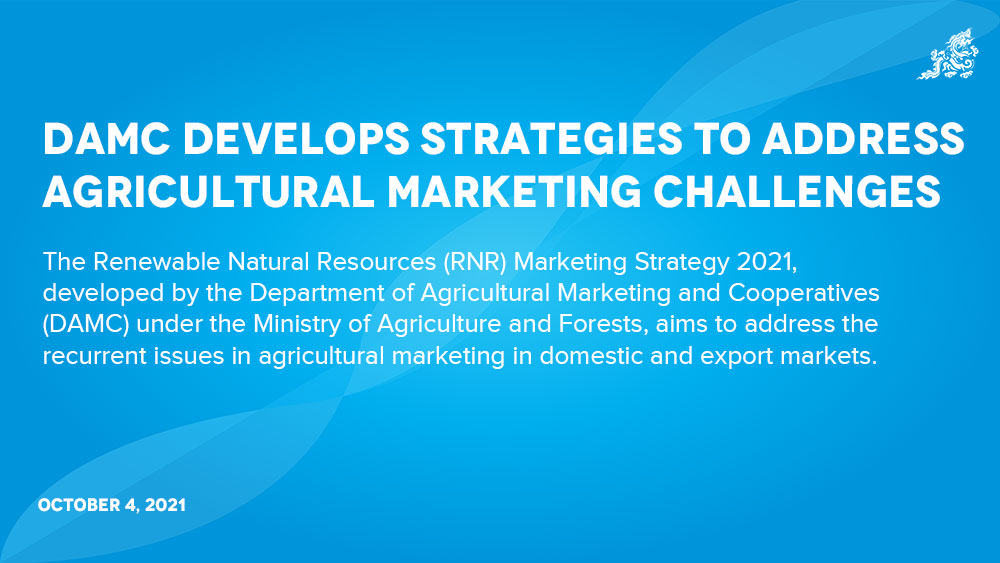Chhimi Dema
The Renewable Natural Resources (RNR) Marketing Strategy 2021, developed by the Department of Agricultural Marketing and Cooperatives (DAMC) under the Ministry of Agriculture and Forests, aims to address the recurrent issues in agricultural marketing in domestic and export markets.
It is expected to create inclusive business opportunities in the market development and value chain management context, support food security and economic development, increase employment generation, and aid policy decision making.
The strategy has identified four issues in the present marketing scenario.
“One issue is how the present production system triggers marketing issues,” said an official from DAMC.
The official said that agricultural production is not based on market demand but rather on targets and is driven by feasibility to produce in that location.
Other issues highlighted were the limited product value addition and difficulty in accessing reliable markets due to poor market logistics and information.
The official said that post-harvest and value addition have not developed to catch market needs, resulting in the import of processed products that could be produced within the country.
In 2019, Bhutan imported food including cereals, processed food, dairy, edible oil, meat, vegetables, fruit, and spices worth Nu 9.4 Billion (B).
“There is no single window service for an RNR enterprise to avail,” the official said, adding that various clearances and requirements from many agencies make it difficult to establish an RNR enterprise.
There are seven strategies developed under six thematic areas to help address the current challenges.
The six thematic areas are policy environment and institutions, present production system, infrastructure and logistics for supply and value chain management, market research and information, current RNR marketing, and RNR enterprise development.
The strategy has action plans against issues present today.
The first strategy is to promote an enabling policy environment and multi-sector coordination to support effective RNR marketing.
The action plans include the establishment of regional and dzongkhag RNR marketing institutions and exploring the possibility of setting up a commodity-based statutory marketing board for export promotion.
The official said that the establishment of a marketing board increases bargaining strength, mandate standards, and quality.
The second strategy, to promote market-led commercial production, focuses on taking stock of food demands and supply in major urban centres to forecast annual requirements for targeted production, and developing market assurance and price guarantee schemes.
The third strategy, enhancing market infrastructure development investment, would design agricultural produce quality control systems, institute e-commerce platforms, and strengthen the existing commodity exchange platforms.
“The ability of farmers to effectively plan production and marketing of RNR commodities and trading of other rural products are limited in the absence of real-time market information,” stated the marketing strategy. “This not only creates the dependency on physical structures [Centenary Farmers’ Market, Sunday Markets] but encourages middlemen (buyers) to pay less to farmers and reap a maximum profit margin.”
The strategy mentioned that limited export market information resulted in export dependency on a few buyers and limited international market reach.
Hence, the fourth strategy focuses on establishing international market links and enhancing the existing agricultural marketing information system to provide real-time information.
The fifth and sixth strategies focus on developing internal market distribution systems to access domestic and international markets. The final strategy highlights the promotion of RNR enterprises for value addition and product development.
RNR Economic Hubs and real-time marketing app development are recognised as concepts under the recommended strategies.
“We are optimistic that the recurrent agricultural marketing issues will be addressed to an extent, if we implement these strategies in their totality,” the official said.
The strategy is designed to provide guidance and operational support until 2026.
Edited by Jigme Wangchuk


